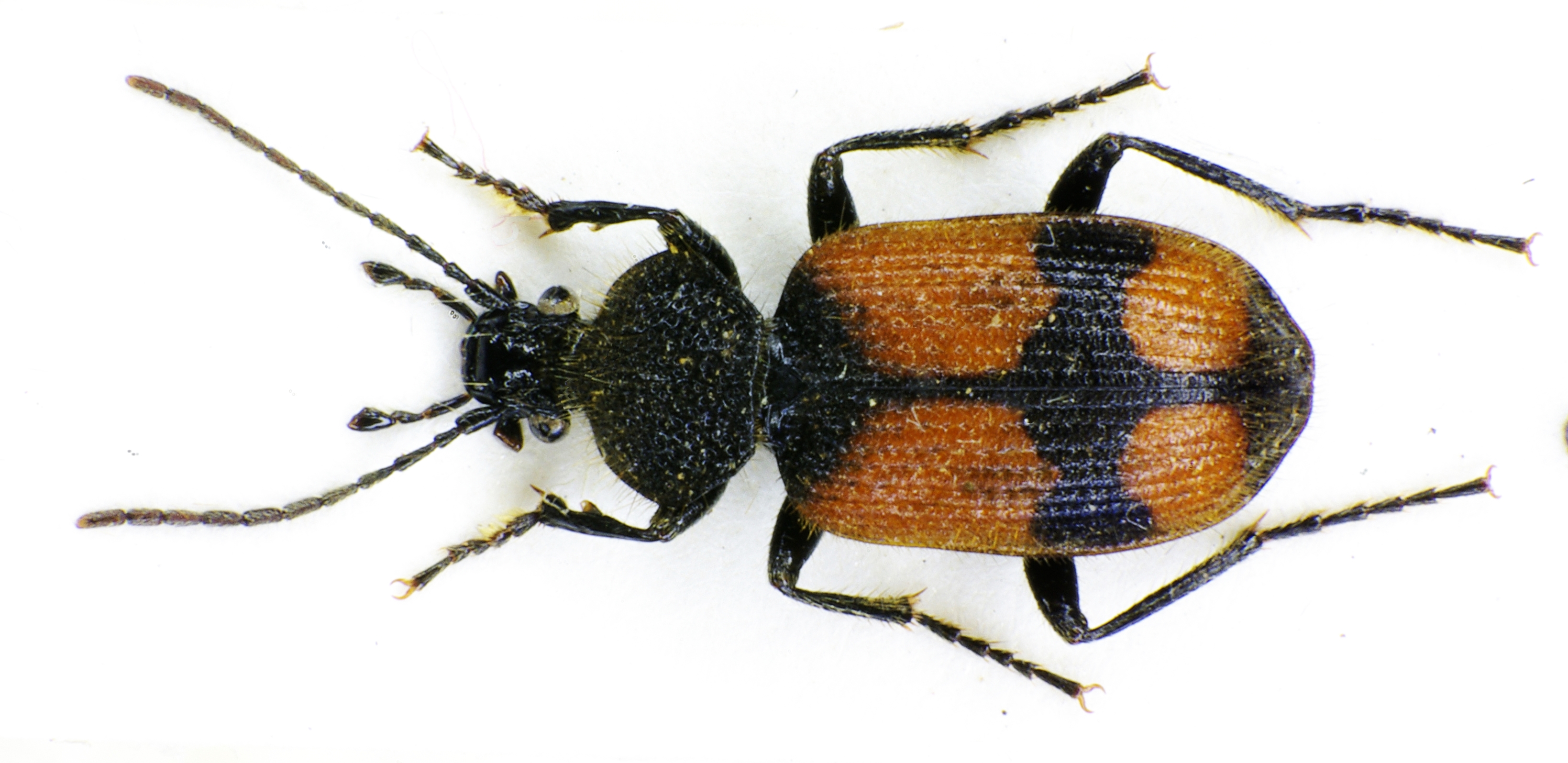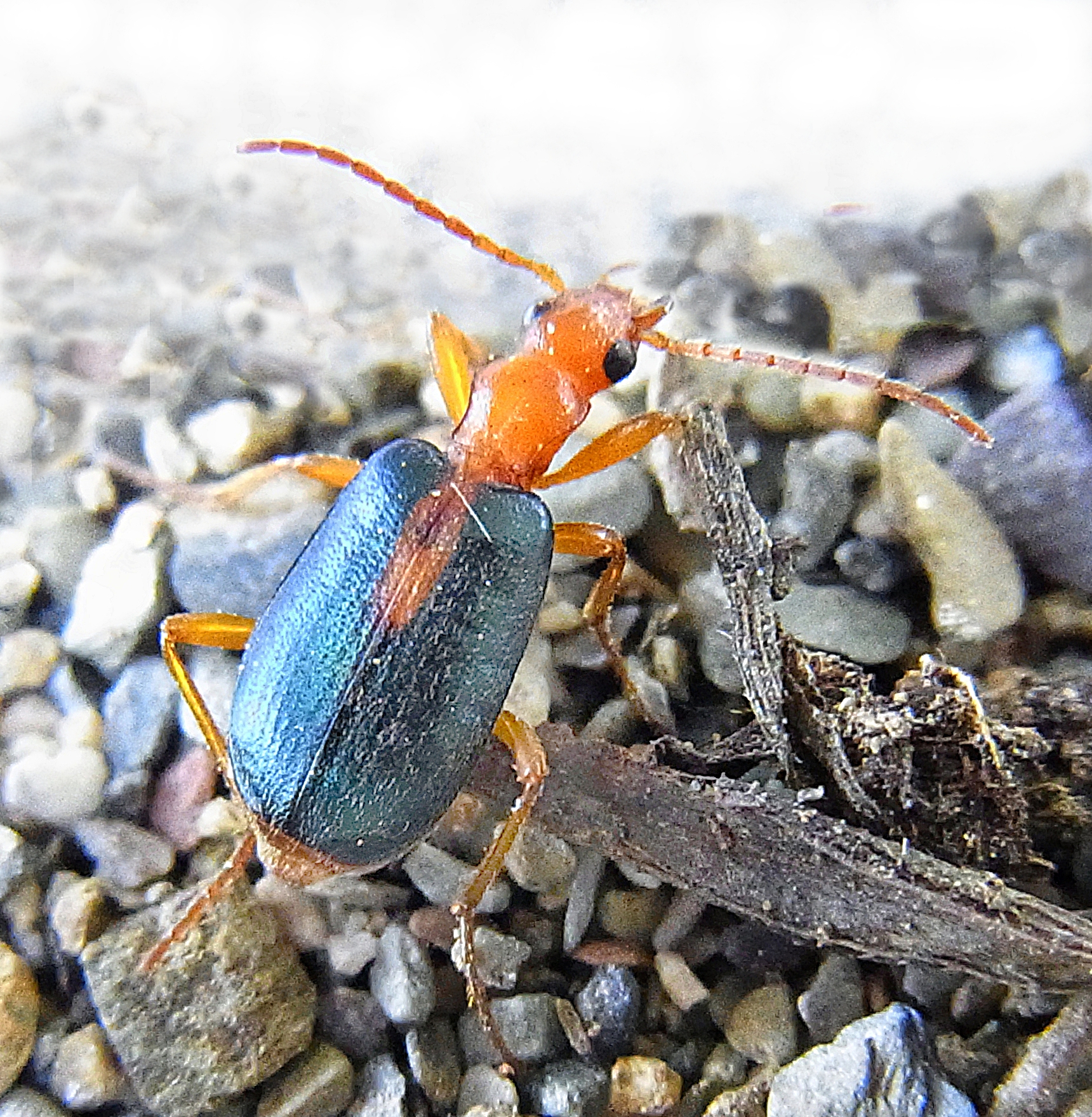|
Brachinus Texanus
''Brachinus texanus'' is a species of ground beetle in the genus '' Brachinus'' ("bombardier beetles"), in the family Carabidae Ground beetles are a large, cosmopolitan family of beetles, the Carabidae, with more than 40,000 species worldwide, around 2,000 of which are found in North America and 2,700 in Europe. As of 2015, it is one of the 10 most species-rich animal ... ("ground beetles"). It is found in North America. Like other bombardier beetles, it can spray a boiling, corrosive liquid from its abdomen if provoked, and as such should not be handled. References Further reading * Arnett, R.H. Jr., and M. C. Thomas. (eds.). (2000). ''American Beetles, Volume I: Archostemata, Myxophaga, Adephaga, Polyphaga: Staphyliniformia''. CRC Press LLC, Boca Raton, FL. * Arnett, Ross H. (2000). ''American Insects: A Handbook of the Insects of America North of Mexico''. CRC Press. * Bousquet, Yves (2012). "Catalogue of Geadephaga (Coleoptera, Adephaga) of America, north of Mexico ... [...More Info...] [...Related Items...] OR: [Wikipedia] [Google] [Baidu] |
Ground Beetle
Ground beetles are a large, cosmopolitan distribution, cosmopolitan family (biology), family of beetles, the Carabidae, with more than 40,000 species worldwide, around 2,000 of which are found in North America and 2,700 in Europe. As of 2015, it is one of the 10 most species-rich animal families. They belong to the Adephaga. Members of the family are primarily Carnivore, carnivorous, but some members are Herbivore, herbivorous or Omnivore, omnivorous. Description and ecology Although their body shapes and coloring vary somewhat, most are shiny black or metallic and have ridged wing covers (elytra). The elytra are fused in some species, particularly the large Carabinae, rendering the beetles unable to fly. The species ''Mormolyce phyllodes'' is known as violin beetle due to their peculiarly shaped elytra. All carabids except the quite primitive flanged bombardier beetles (Paussinae) have a groove on their arthropod leg, fore leg tibiae bearing a comb of hairs used for cleaning the ... [...More Info...] [...Related Items...] OR: [Wikipedia] [Google] [Baidu] |
Brachinus
''Brachinus'' is a genus of ground beetle native to the Nearctic, Palearctic, the Near East and North Africa. Beetles in this genus are commonly referred to as bombardier beetles. The genus contains the following species: * ''Brachinus aabaaba'' Erwin, 1970 * ''Brachinus abbreviatus'' (Laporte, 1835) * ''Brachinus abyssinicus'' Chaudoir, 1876 * '' Brachinus adustipennis'' Erwin, 1969 * '' Brachinus aeger'' Chaudoir, 1876 * '' Brachinus aeneicostis'' Bates, 1883 * '' Brachinus afghanus'' Jedlicka, 1967 * '' Brachinus agraphus'' (Alluaud, 1899) * '' Brachinus albarracinus'' Wagner, 1926 * ''Brachinus alexandri'' F.Battoni, 1984 * '' Brachinus alexiguus'' Erwin, 1970 * ''Brachinus algoensis'' Péringuey, 1896 * '' Brachinus alternans'' Dejean, 1825 * ''Brachinus americanus'' (LeConte, 1844) * ''Brachinus andalusiacus'' Rambur, 1837 * ''Brachinus andamanensis'' Tian & Deuve, 2015 * ''Brachinus andreaei'' Basilewsky, 1964 * ''Brachinus angustatus'' (Dejean, 1831) * ''Brachinus ankar ... [...More Info...] [...Related Items...] OR: [Wikipedia] [Google] [Baidu] |
Carabidae
Ground beetles are a large, cosmopolitan family of beetles, the Carabidae, with more than 40,000 species worldwide, around 2,000 of which are found in North America and 2,700 in Europe. As of 2015, it is one of the 10 most species-rich animal families. They belong to the Adephaga. Members of the family are primarily carnivorous, but some members are herbivorous or omnivorous. Description and ecology Although their body shapes and coloring vary somewhat, most are shiny black or metallic and have ridged wing covers ( elytra). The elytra are fused in some species, particularly the large Carabinae, rendering the beetles unable to fly. The species '' Mormolyce phyllodes'' is known as violin beetle due to their peculiarly shaped elytra. All carabids except the quite primitive flanged bombardier beetles (Paussinae) have a groove on their fore leg tibiae bearing a comb of hairs used for cleaning their antennae. Defensive secretions Typical for the ancient beetle suborder A ... [...More Info...] [...Related Items...] OR: [Wikipedia] [Google] [Baidu] |
Brachininae
Brachininae is a subfamily of beetles in the family Carabidae. There are about 7,500 species in 14 genera of the subfamily. Taxonomy The subfamily contains two tribes and 14 genera. ; Tribe Brachinini Bonelli, 1810 : '' Aptinoderus'' Hubenthal, 1919 : '' Aptinus'' Bonelli, 1810 : '' Brachinulus'' Basilewsky, 1958 : '' Brachinus'' Weber, 1801 : '' Mastax'' Fischer von Waldheim, 1828 : '' Pheropsophus'' Solier, 1833 : '' Styphlodromus'' Basilewsky, 1959 : '' Styphlomerus'' Chaudoir, 1875 ; Tribe Crepidogastrini Jeannel, 1949 : '' Brachynillus'' Reitter, 1904 : '' Crepidogaster'' Boheman, 1848 : '' Crepidogastrillus'' Basilewsky, 1959 : '' Crepidogastrinus'' Basilewsky, 1957 : ''Crepidolomus ''Crepidolomus'' is a genus in the ground beetle family Carabidae. There are at least two described species in ''Crepidolomus'', found in Madagascar Madagascar, officially the Republic of Madagascar, is an island country that includes th ...'' Basilewsky, 1959 : '' Crepidonellus'' Ba ... [...More Info...] [...Related Items...] OR: [Wikipedia] [Google] [Baidu] |
Beetles Described In 1868
Beetles are insects that form the Taxonomic rank, order Coleoptera (), in the superorder Holometabola. Their front pair of wings are hardened into wing-cases, elytra, distinguishing them from most other insects. The Coleoptera, with about 400,000 described species, is the largest of all orders, constituting almost 40% of described arthropods and 25% of all known animal species; new species are discovered frequently, with estimates suggesting that there are between 0.9 and 2.1 million total species. However, the number of beetle species is challenged by the number of species in Fly, dipterans (flies) and hymenopterans (wasps). Found in almost every habitat except the sea and the polar regions, they interact with their ecosystems in several ways: beetles often feed on plants and fungi, break down animal and plant debris, and eat other invertebrates. Some species are serious agricultural pests, such as the Colorado potato beetle, while others such as Coccinellidae (ladybirds or ... [...More Info...] [...Related Items...] OR: [Wikipedia] [Google] [Baidu] |
Taxa Named By Maximilien Chaudoir
In biology, a taxon (back-formation from ''taxonomy''; : taxa) is a group of one or more populations of an organism or organisms seen by taxonomists to form a unit. Although neither is required, a taxon is usually known by a particular name and given a particular ranking, especially if and when it is accepted or becomes established. It is very common, however, for taxonomists to remain at odds over what belongs to a taxon and the criteria used for inclusion, especially in the context of rank-based (" Linnaean") nomenclature (much less so under phylogenetic nomenclature). If a taxon is given a formal scientific name, its use is then governed by one of the nomenclature codes specifying which scientific name is correct for a particular grouping. Initial attempts at classifying and ordering organisms (plants and animals) were presumably set forth in prehistoric times by hunter-gatherers, as suggested by the fairly sophisticated folk taxonomies. Much later, Aristotle, and later still ... [...More Info...] [...Related Items...] OR: [Wikipedia] [Google] [Baidu] |




